
At PersaFlores.com , we celebrate the diversity and uniqueness of the Christmas flower, a plant that varies in its names around the world: such as in Central America where it is known in its countries as "Christmas Star", "Christmas Eve Flower" in Mexico, or in South America as "Pascuero" in Chile, or "Estrella Federal" in Argentina.
Scientifically known as Euphorbia pulcherrima , this houseplant was introduced to North America by Joel Roberts Poinsett and has become a universal symbol of Christmas. So, you've already got a rough idea of the different names for poinsettias in other countries.
How do you care for a Poinsettia plant?
-
Light : Place it in a place with indirect natural light.
-
Temperature : Maintain a constant temperature, between 16 and 22 degrees Celsius.
-
Watering : Water when the soil surface is dry. Avoid overwatering.
-
Humidity : Use a humidifier in dry environments.
Light and Location
This star plant prefers indirect natural lighting and fears direct sun. Its ideal location is near a window that filters sunlight, providing the perfect environment to maintain its vibrant red color. Depending on your region in Spain, you can even place it outdoors.
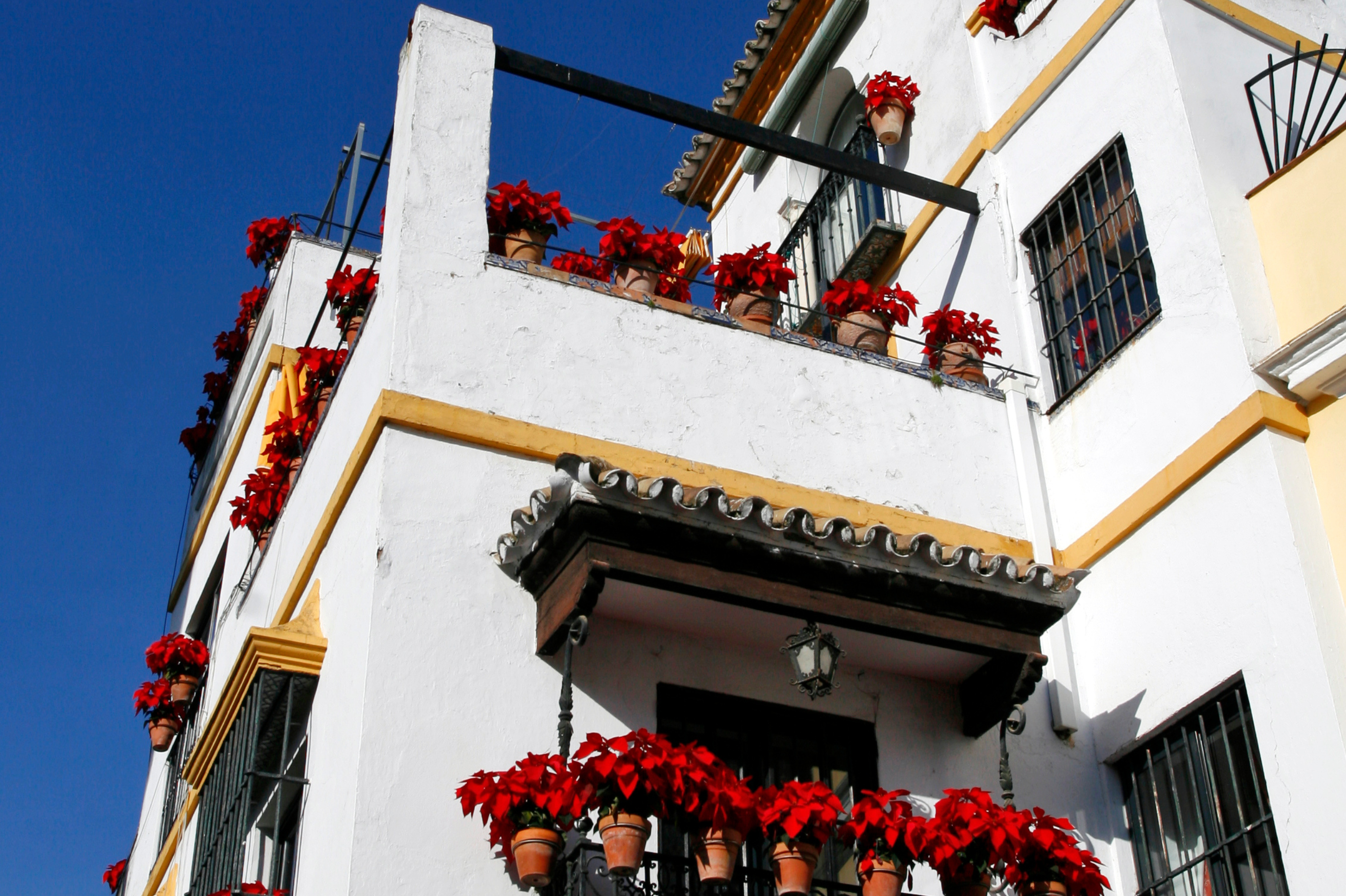
Temperature and Humidity
Native to warm climates, the poinsettia prefers a temperature between 16 and 22 degrees Celsius. Humidity is its friend, so consider using a humidifier in drier climates.
Irrigation and Feeding
The poinsettia, known for its beauty during the Christmas holidays, requires specific care in terms of watering and feeding to maintain its beauty. One of the most common mistakes is overwatering, which can be very harmful to the plant. It is crucial to water the poinsettia only when the soil is completely dry to the touch. To determine this, you can insert your finger into the soil a few inches; if you feel moisture, wait before watering.
Also, make sure the pot you place the plant in has good drainage. This is essential to prevent water from accumulating at the bottom, which could cause root rot. As for feeding, the Poinsettia doesn't require special fertilizers, but if you decide to use them, do so sparingly and following the product's instructions specifically for indoor plants.
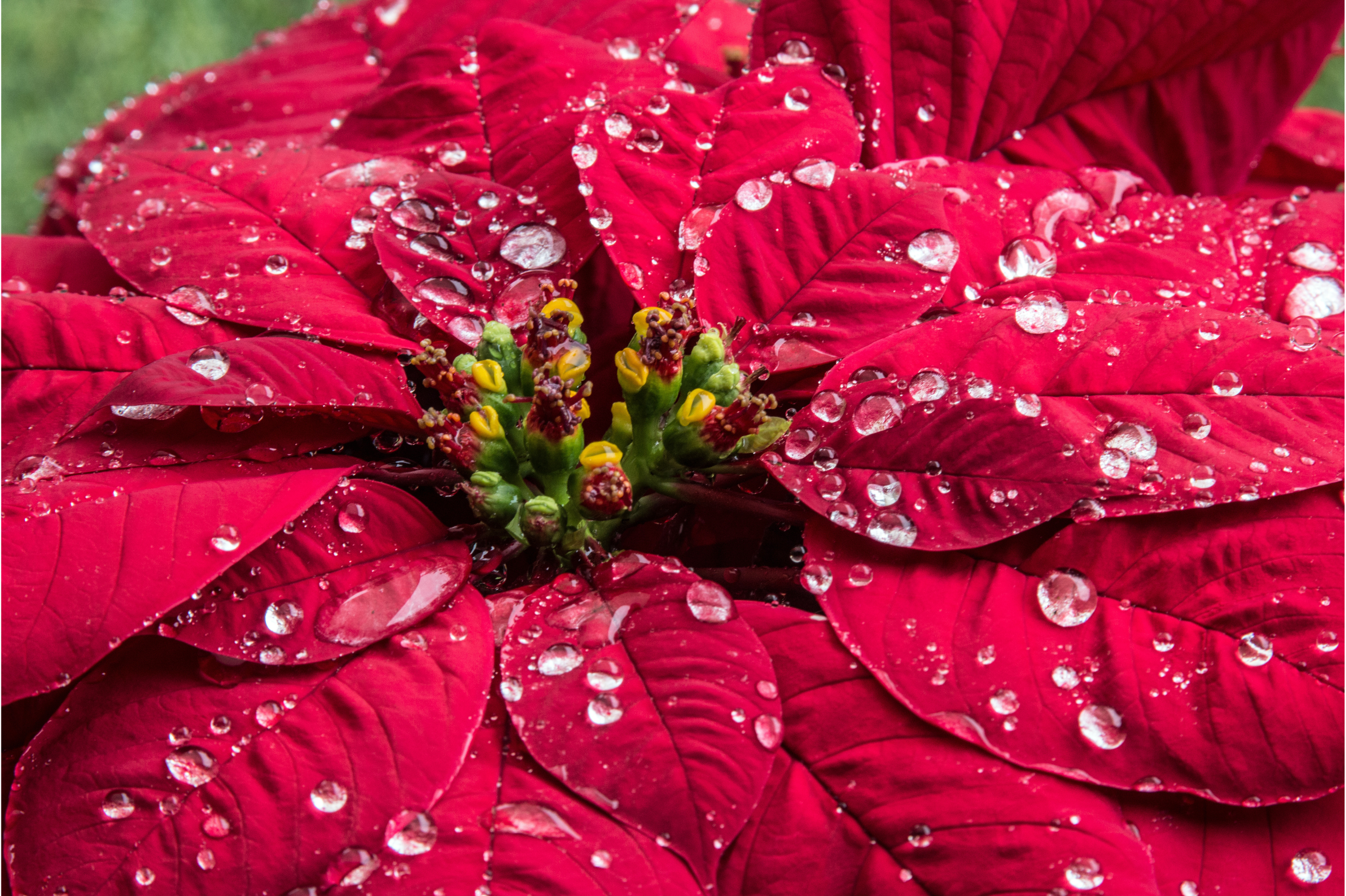
Where to place the Poinsettia at home?
The poinsettia, a plant that captures the essence of Christmas with its vibrant colors, requires a special place in your home to bloom in all its splendor. When choosing its location, consider the following aspects to ensure its health, blooming, and beauty:
Light and Shadow: The Perfect Balance
Find a spot in your home where the plant can enjoy plenty of natural light but not be exposed to direct sunlight. A north- or east-facing window is usually ideal, providing soft, diffused lighting that is perfect for the poinsettia. Avoid placing it near south- or west-facing windows where the sun's rays can be too intense, especially during the afternoon hours.
Protection against drafts and heat sources
The poinsettia is sensitive to cold drafts and sudden changes in humidity and temperature. Avoid placing it near doors that frequently open to the outside or in drafty areas. Also, keep the plant away from direct heat sources such as radiators, fireplaces, or air conditioners. These sources can dry out the plant quickly and cause its leaves to drop prematurely.
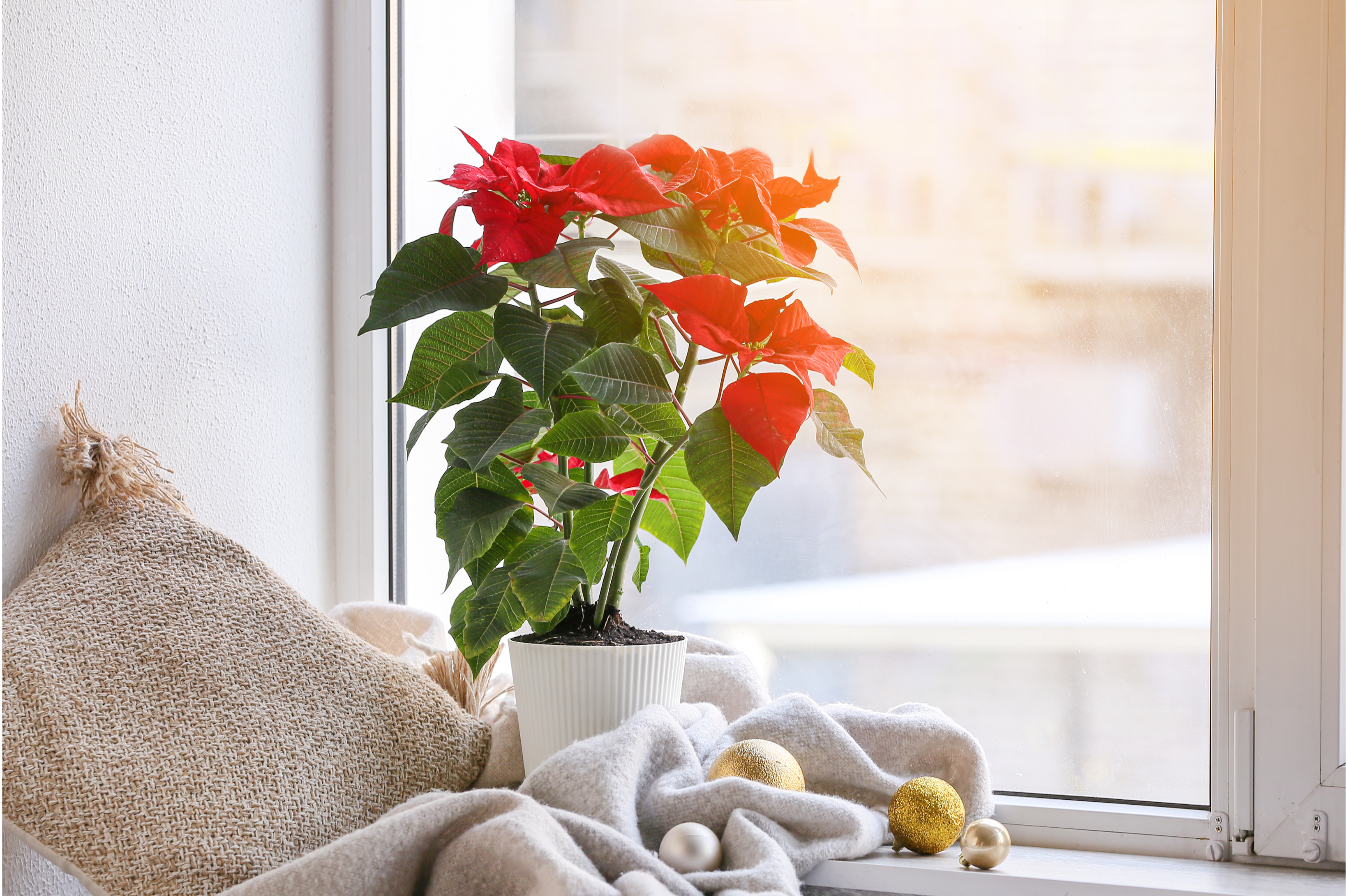
A Space of One's Own
Consider dedicating a specific space in your home to the poinsettia, where it can be admired but not in the way of daily traffic. A side table in the living room, a shelf in a quiet corner, or even the center of a rarely used dining table can be excellent options. Make sure there is enough space around the plant for air to circulate freely, thus promoting its health and vitality.
Aesthetic Considerations
In addition to the practical aspects, consider how the poinsettia can complement your home decor. With its striking red bracts, it can be a charming focal point in any room. Coordinate its pot with the colors and style of your decor to create a harmonious and festive look.
By following these tips, your poinsettia will not only grow healthy, but will also enhance the beauty and holiday spirit of your home.

What to do when the poinsettia leaves fall?
-
Check the temperature .
-
Adjust the irrigation .
-
Inspect for pests or diseases .
Check the Temperature: Leaf Fall and Watering.
A delicate balance between the right temperature and proper watering will keep its leaves firm and vibrant. Avoid drafts and adjust watering to prevent leaf drop. Avoid overwatering. Water when the soil is dry.
Pests and Diseases
Watch out for unwanted guests like aphids. Keep the soil well-drained and avoid overwatering to prevent fungal diseases.
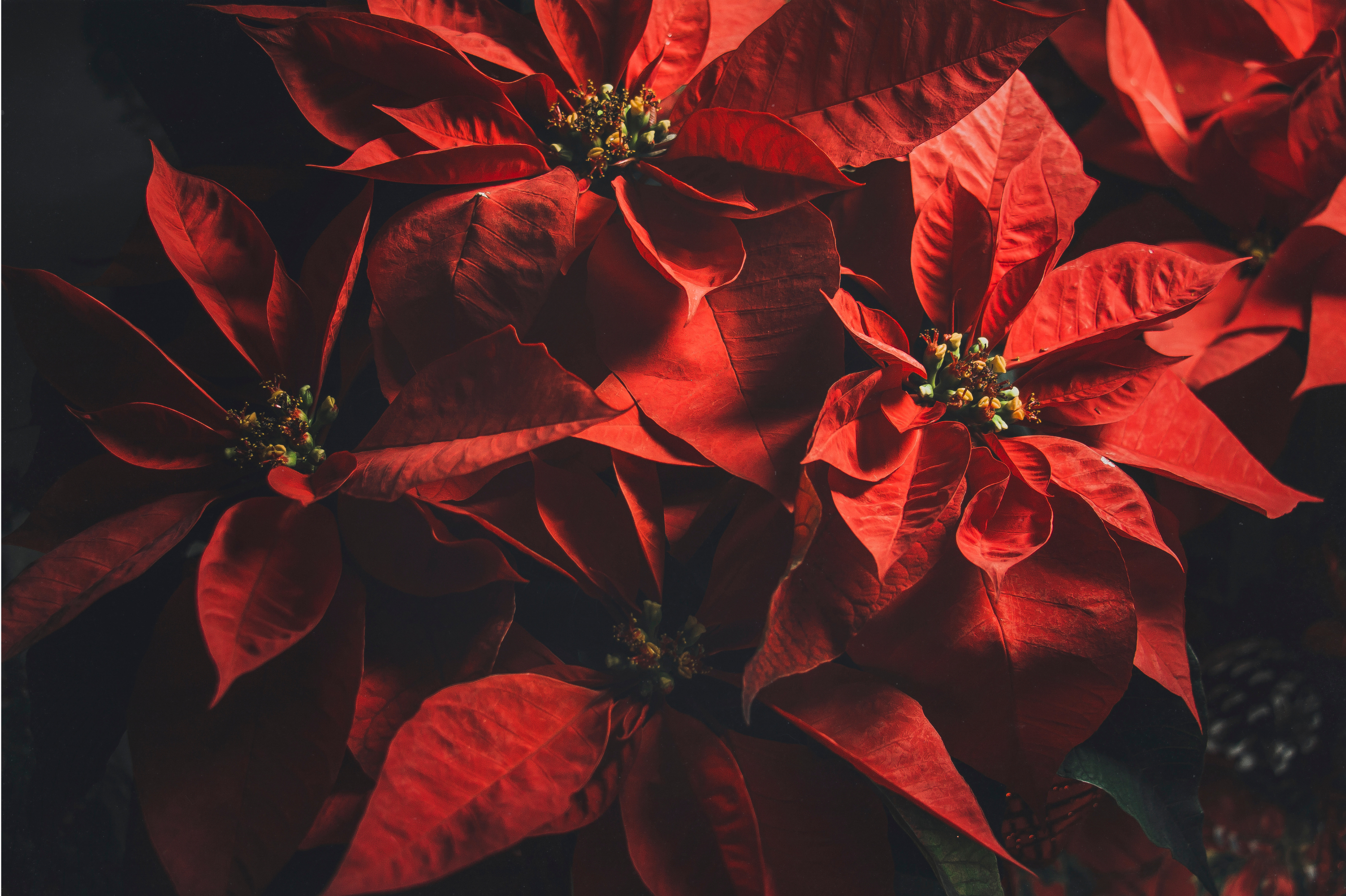
When does the poinsettia turn red?
The poinsettia acquires its characteristic red color through a process called photoperiodism. This means the plant requires long periods of uninterrupted darkness (around 14 hours per night) for approximately 8 weeks to produce the color change of its bracts, the specialized leaves that many mistake for petals. This process typically begins in October so that the leaves turn red in time for the holiday season, but it can also vary by species.
How long does the Poinsettia last?
The longevity of poinsettias, an iconic symbol of Christmas, depends largely on the care this tree receives. This plant can not only survive but also thrive for several months and even sprout the following year, becoming a lasting member of your indoor garden.
After the Christmas Season
After the Christmas period, poinsettias enter a dormant phase. During this time, it's normal for them to lose some or all of their colorful leaves. Don't be alarmed; this is part of their natural cycle. Reduce watering during these months, allowing the soil to dry completely between waterings. Keep the plant in a cool, bright place, but away from direct sunlight.
Preparing for Next Year
As spring approaches, you can begin preparing your poinsettias for their next growth cycle. In March or April, prune the plant, leaving about 6 inches (15 cm) of stem. This will encourage new shoots to grow. Gradually increase watering and consider repotting it in a larger pot with fresh soil to provide additional nutrients.
The poinsettia, with its distinctive color, is a plant that can live and beautify your home beyond the holiday season. To ensure it's ready for next year, it's important to start preparing it in spring.
Pruning and Promoting Growth In March or April, when the signs of spring begin to appear, is the ideal time to prune your poinsettia. You should cut the stems back, leaving approximately 15 cm (6 inches) from the base. This pruning not only helps keep the plant at a manageable size, but is also crucial for stimulating the growth of new shoots, which will give it vigor and freshness.

Adjusting Watering After pruning, it's time to adjust your watering. During the winter, poinsettia requires less water, but with the arrival of spring and the increase in daylight hours, its water needs change. Gradually increase the amount of water, always making sure the soil is dry to the touch before adding more water.
Repotting and Nutrition Consider repotting your poinsettia to a larger pot. This repotting offers several benefits: it provides more room for root growth, allows the plant to obtain new nutrients from the fresh soil, and improves drainage, which is vital for its health. When repotting, choose a good quality soil, preferably one designed for indoor plants.
The Regrowth Process
To encourage the regrowth of red leaves and flowering, begin providing the plant with extended periods of darkness in October. For approximately 8 weeks, the Poinsettia needs about 14 hours of uninterrupted darkness each night. You can achieve this by placing it in a closet or covering it with a box at night and then exposing it to bright light during the day.
Patience and Care
With patience and care, you'll see your poinsettia blossom with new leaves and, eventually, its characteristic red petals. This process can be challenging, but it's incredibly rewarding to see a plant that has been a symbol of Christmas reborn year after year. The longevity and rebirth of the poinsettia are a testament to the care and love we put into our plants. With these tips, we hope you can enjoy the beauty of your poinsettia for many years to come.
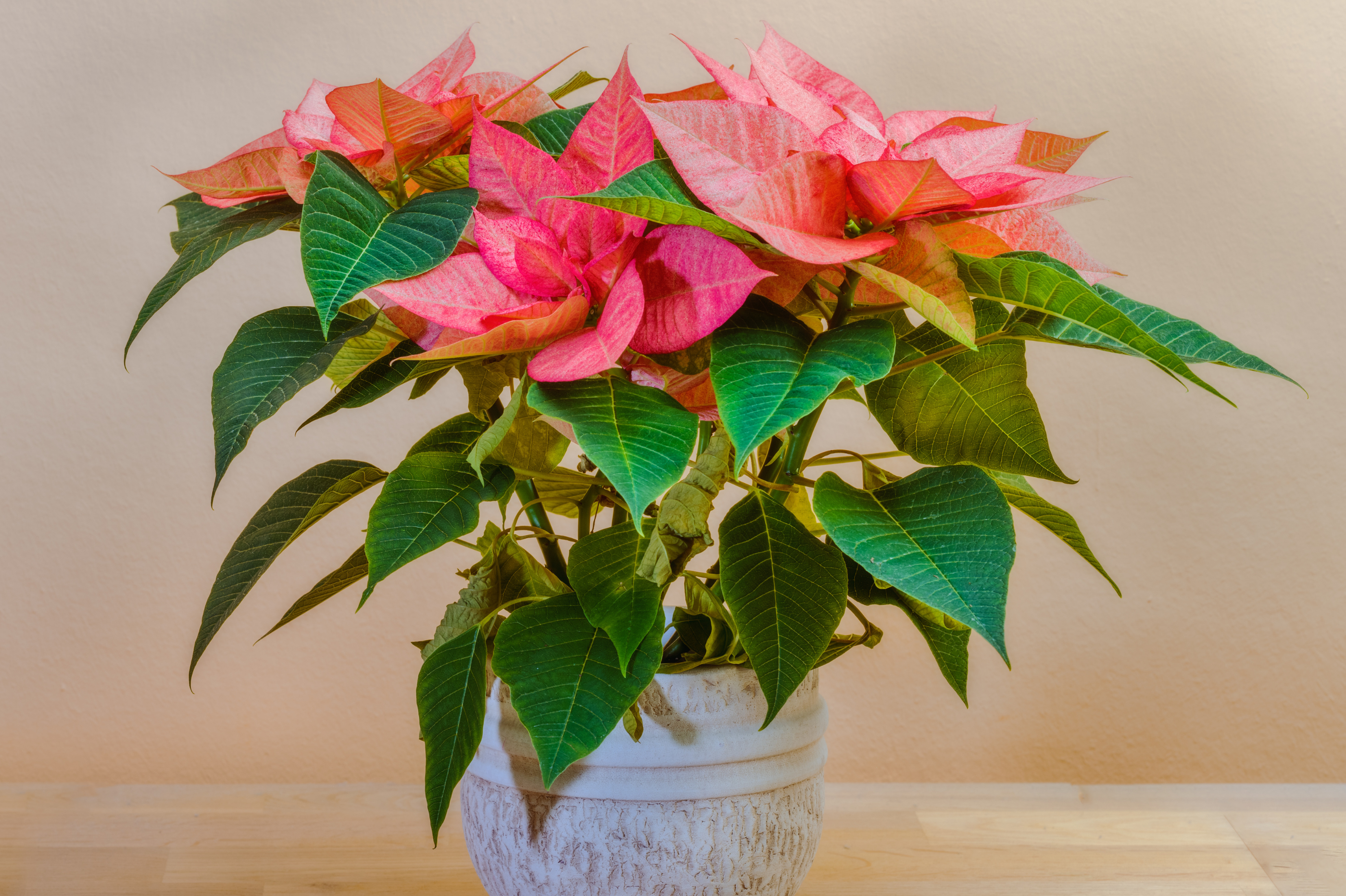
A Journey Through Cultures and Traditions
The Poinsettia invites us on a journey through cultures and traditions, uniting homes and hearts around the world during the Christmas season. At PersaFlores, we are proud to be part of this tradition, offering you not only flowers, but also stories and care that pass down through generations. Discover our selection of Poinsettias and add a special touch to your home this Christmas.
And to learn more about the world of poinsettias, we invite you to read our other articles: Poinsettia Colors and Poinsettia and Christmas . We hope these tips will help you enjoy your poinsettia this Christmas, during the holidays and the holiday season, and even beyond, depending on where you plant it.



